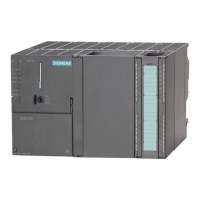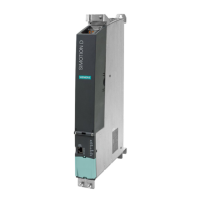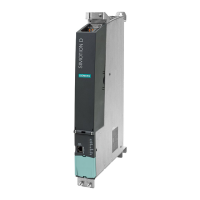Basics of Path Interpolation
2.6 Path dynamics
TO Path Interpolation
34 Function Manual, 11/2010
● No allowance for maximum dynamic values of path axes (INACTIVE)
With this setting, the axial limits are not taken into account within the path interpolation.
However, path axis limiting is still active and, if a violation occurs, a setpoint-side path
error can result.
The setting is useful if:
– There are no transformed dynamic values
– It can be ensured in advance (e.g. during commissioning) that the axial limit values
are not exceeded
– The axial limits have been taken into account through an application, e.g. through
calculation of an optimized velocity profile
– Superimposed axis motions occur
● Reduction in the maximum path dynamics according to the maximum dynamic values of
path axes (ACTIVE_WITH_CONSTANT_LIMITS)
The velocity and acceleration of the path is limited in the path interpolator to the
maximum values in the Cartesian coordinates calculated from the maximum value
settings of the individual path axes.
Axis-specific jerk limits in the preliminary path plan are not taken into account. However,
the jerk can be limited by specifying the pathMotion monitoring on the path axis
accordingly. This can result in a setpoint-side path error.
If the dynamic limits of an axis are reached, i.e. if the programmed path
velocity/acceleration cannot be achieved due to these limits, an alarm will be issued.
If the dynamic limits of the path axes are changed online, the changes take effect
immediately but not for the currently active or decoded motion command.
● Segment-by-segment reduction in the maximum path dynamics according to the
maximum dynamic values of path axes in these segments
(ACTIVE_WITH_VARIABLE_LIMITS).
This setting is equivalent to ACTIVE_WITH_CONSTANT_LIMITS, except that the path is
segmented. Overall, the path is travelled faster; the velocity is not constant over the entire
path.
From system variable kinematicsData.transformationsOfDynamics of the path object, you
can read out whether the maximum dynamic values of the axis are transformed values. If
not, the path dynamics are always limited with the path object dynamic limits, regardless of
the setting in the dynamicAdaption command parameter.
Difference between ACTIVE_WITH_CONSTANT_LIMITS and ACTIVE_WITH_VARIABLE_LIMITS
The following trace shows the difference between ACTIVE_WITH_CONSTANT_LIMITS and
ACTIVE_WITH_VARIABLE_LIMITS. Two circular paths are traveled with a 2D portal; the
maximum velocities of the path axes follow:
● Axis_X: 500 mm/s
● Axis_Y: 200 mm/s
A path velocity of 400 mm/s is defined in the path commands.

